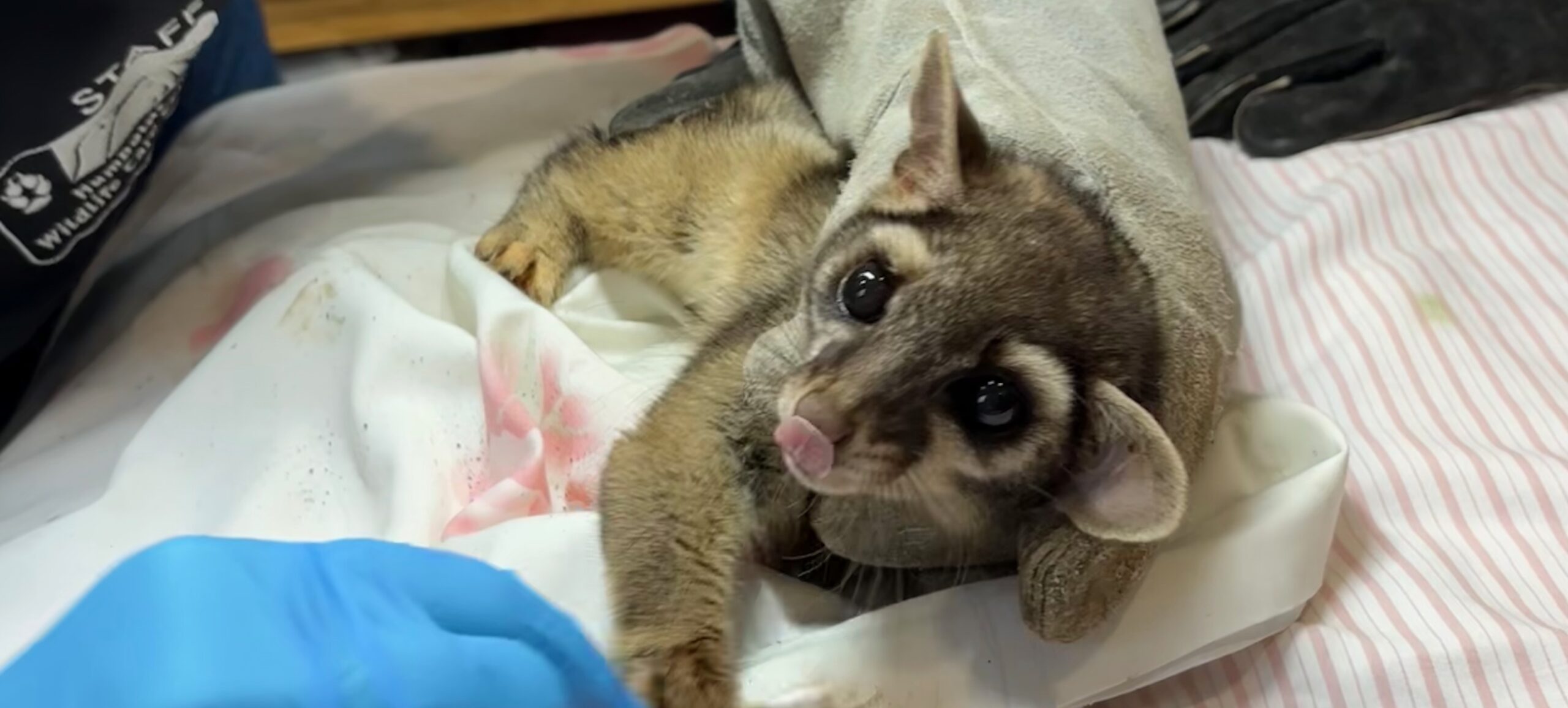
Special to our website, Humboldt WIldlife Care Center’s Assistant Wildlife Rehabilitation Manager, Lucinda Adamson, tells the story of a pretty usual patient.
Working at a wildlife rehabilitation facility, you never know what to expect when answering the phone. Often it’s someone who has found a sick or injured animal and they are hoping they’ve found the correct place to bring the animal. They have! Sometimes it’s someone who is having a conflict with a wild animal in or around their house. We can help with that too! And then there’s the myriad of other calls that are impossible to predict. In late March, one of those unusual calls came in when someone called asking for help with an interesting situation…there was a Ringtail stuck in a washing machine.
A Ringtail in a washing machine? We repeated to make sure we had heard that correctly. Ringtails are not the most common animal to encounter. Although not rare, the small nocturnal carnivores are solitary and elusive, not often seen. We have treated only 6 Ringtails at Humboldt Wildlife Care Center since 2012.
Gathering more information from the caller, we learned that they were an employee at the recycling center in McKinleyville. The Ringtail had been discovered while they were processing an old washing machine that had recently been dropped off. This changed the scenario quite a bit. If the Ringtail had been found trapped where they lived, then leaving the machine open and providing a ramp for the animal to climb out on their own is usually the first advice we give. This is a common scenario with large holes in the ground, foundational window wells, dumpsters, etc. But this individual was potentially far removed from their home, and not knowing how long they had been trapped, we needed to evaluate their health before anything else could happen.
Safely capturing the small, fast, agile animal without getting bit and without the Ringtail getting loose and lost amongst all the large trucks and piles of debris at the recycling center could be a very challenging task. We sent an experienced rescue team out right away armed with nets, sheets, leather gloves, and excited well wishes. While no one ever wants to see any animal in distress, it’s still an undeniably rare experience and perk of the job to be able to see and help unique animals like a Ringtail when they are in need.
When staff arrived at the recycling center, we found the employee who had called standing guard over the washing machine in question. Fortunately, he had been keeping watch to make sure no one else accidentally moved the machine and ensuring the Ringtail didn’t get lost or become further injured. Wearing our leather gloves and with the net held at the ready in case the animal made a break for it, we cautiously opened the lid while simultaneously covering the opening with the sheet so we could safely evaluate the situation.
Coming eye to eye with the Ringtail, we first noted that they were, thankfully, fairly alert. Great for their overall health but it could make catching them more difficult. They must have been quite scared as the sounds of heavy machinery moving large piles of metal in the large warehouse were deafeningly loud. Luckily, with the confidence of many years experience handling wild animals, we were able to safely and quickly grab the frightened Ringtail and secure them in a box to transport them back to our clinic in Manila. We were also very fortunate to learn that the employees knew that this particular washing machine had come down from Hoopa, which would prove invaluable information when it came time to release the Ringtail back where they belonged.

Upon initial exam, our staff rehabilitators discovered that this adult male was slightly thin and moderately dehydrated but had no physical injuries. With his trademark tail longer than his body, big round eyes and short ears, he was ridiculously cute! Treating his dehydration was first on the agenda. Subcutaneous fluids were provided to overcome his hydration deficit. He was otherwise stable so we moved him to outside housing where he could have more privacy and de-stress from his ordeal. Almost immediately he climbed the wall and found a high spot where he could feel safer. A varied diet of rats, fruit, and insects was offered which he readily ate.
Over the next few days we monitored the Ringtail’s hydration, providing more fluid support as needed. We ran lab tests and treated his parasites.

Within a week, his condition had improved dramatically and it was time to take him back to his mountain home in Hoopa. Once his box was opened in a small forest clearing, he wasted little time observing his new surroundings before he ran from his box and into the cover of brush.
It was an honor to be able to provide the care he needed and return him to the place where he belonged. Thank you so much for supporting our work so we can continue to help our wild neighbors in need.


